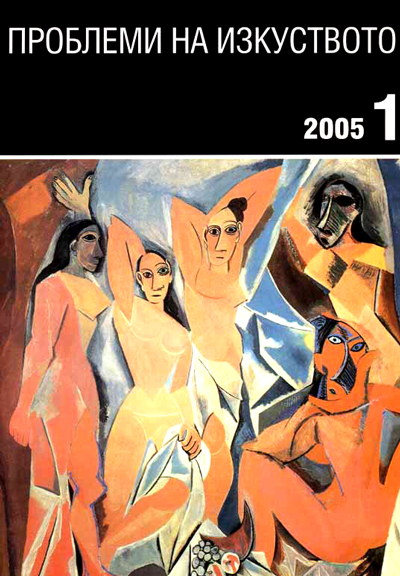Методи и практики на художествената критика в България през 90-те години на ХХ век
Methods and Practices of the Art Criticism in Bulgaria during the 1990s
Author(s): Svilen StefanovSubject(s): History, Philosophy, Fine Arts / Performing Arts, Visual Arts, Aesthetics, Recent History (1900 till today)
Published by: Институт за изследване на изкуствата, Българска академия на науките
Summary/Abstract: A distinctive feature of art criticism in the 1990s was the emergence of new strategies of interpretation. The period was characterized by institutional instability and a change of the model of contemporary art, as a result of which contemporary art criticism too saw itself lacking in a systematic methodology. A criticism emancipated from all ideological dogmatism was born at the same time as professional art academic education was confronted by a nonconformist, militant kind of “operative” critical writing, which had set itself the aim of provoking a radical change in the art model inherited from the previous system. The 1990s in Bulgaria saw the emergence of some new functions in the social role of the art critic. From a figure taking his cue from the ideas and works of the artist he evolved into an all-important ideologue and selector “casting the characters” on the “art scene”. While art criticism took on new functions and developed a new awareness of its tasks and relevance, one can ask whether the actual increase in the importance of the critic-curator hybrid does not reflect the global crisis in the functioning of this specific activity? If we can really speak of a crisis in the institution of art criticism at present, this might well be the result of a loss of the critic’s credibility as a mediator between art and the public. Art criticism is losing its homogeneity as a specific subject and is dissolving in the practice of the curator, the gallery owner, the art dealer, etc. Because of these institutional commitments, the critic is increasingly forfeiting the liberal (postmodern) mainstays of his position. The critic’s activity is ruthlessly exploited as the warden of territory. In the 1990s art criticism in Bulgaria experienced a revival only to be deformed again due to its inability to establish itself as an autonomous cultural field – the mediator between the artwork and the public being foredoomed to act as a figure belonging to realms parallel to art criticism. The problem confronting criticism is revealed in its functions as a subservient activity. Instead of analysing and interpreting contemporary art in terms of possible historical and socio-cultural meanings, it is toying with issues of the immediate present, which are more properly the domain of the curator, the museum worker, the art dealer, etc. The role of intermediary, historically bequeathed to European art criticism, fails to carry conviction nowadays, because the Mediator’s vocation has been reduced to a mere mask on the face of a relatively new social figure aspiring to play a leader’s part in the interrelations between the artist, his work and the public.
Journal: Проблеми на изкуството
- Issue Year: 2005
- Issue No: 1
- Page Range: 25-29
- Page Count: 5
- Language: Bulgarian
- Content File-PDF

